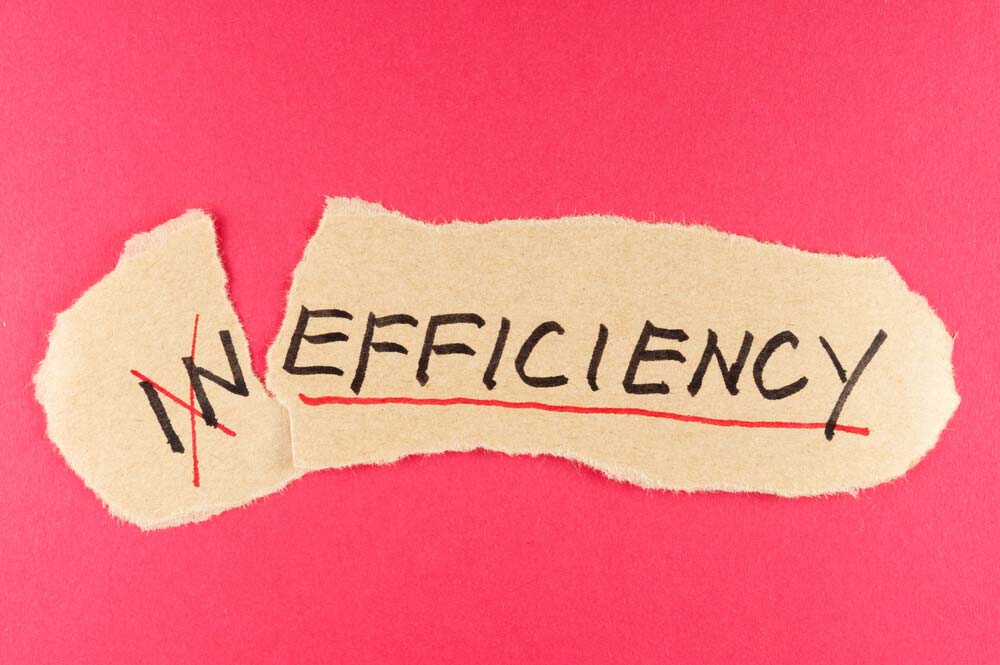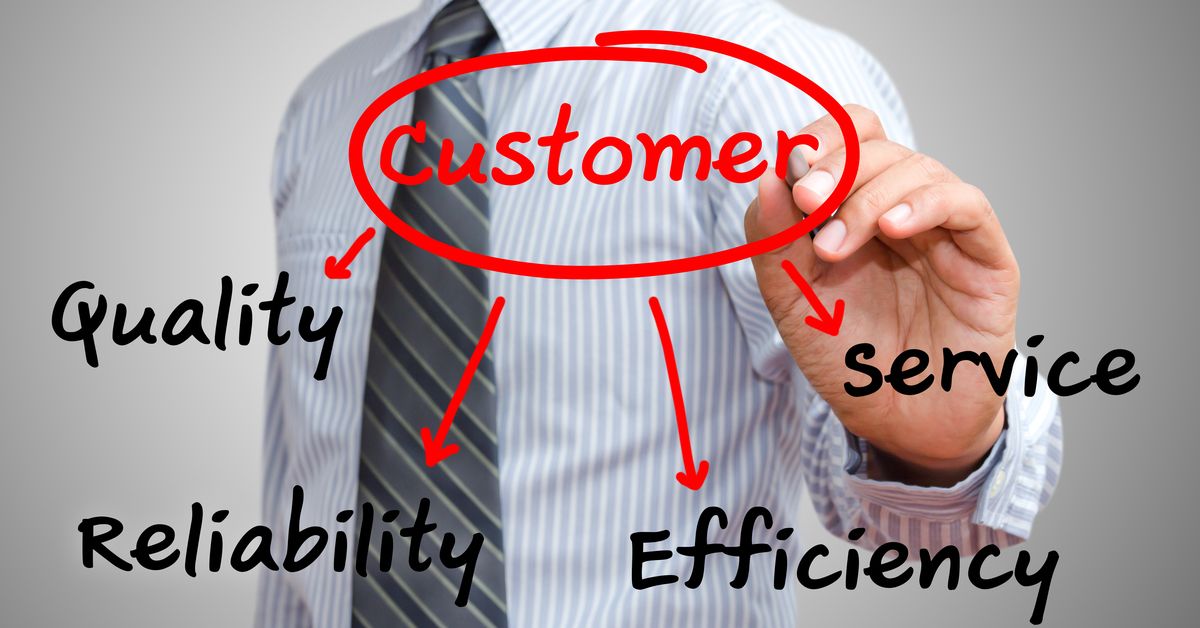"To perform better, my team needs more people." Have you ever heard anyone say that in your workplace? Frankly, that always makes me skeptical. Sometimes it's true, but sometimes it's just an unfounded excuse. Managers don't always have a strong grasp of how busy their employees are or how long it takes them to perform certain tasks. This means they don't have a good, objective understanding of capacity, nor do they know how to improve team performance.
This lack of understanding can lead to significantly flawed staffing decisions. If you've ever worked for a large company in good economic times, you've probably witnessed an outcome of this condition - kingdom building. Have you ever seen a team double or triple in size even though the workload hasn't really increased? And when you walk past that team's area, there are clear signs there isn’t enough work to keep everyone busy? And meanwhile, performance hasn't improved all that much.
In prosperous times, organizations may be able to absorb these inefficiencies. But in leaner times, like right now, overstaffing can be disastrous for the bottom line and devastating for those excess team members who are laid off.
Effective contact center leaders are all too aware of the need to balance staffing levels with delivering exceptional CX. It's a reality they live every day. They actively manage agent labor costs while also optimizing customer experience. The 2019 NICE CXone Customer Experience (CX) Transformation Benchmark revealed that increasing customer satisfaction and decreasing contact center costs were among the top three number one priorities for call center leaders.
Unlike those kingdom-building managers discussed above, most contact center leaders have access to data that enables them to assess just how busy their agents are and if they have capacity to take on additional work. They also have the ability to optimize results that impact customer experience (CX). This balance of efficiency and CX is made possible by strong workforce management practices.
What is contact center workforce management?
.ashx?la=en&rev=a01501d296c9415398e3d44793b4e36f&hash=2E9D3B2CEA932368EA9B43237229F0E1)
Workforce management (WFM) is a collection of processes and systems designed to ensure the right number of qualified agents are scheduled to handle the volume and nature of forecasted customer contacts. WFM is composed of four key areas:
- Forecasting. Contact centers forecast volume for all their channels in order to predict future workload and staffing needs. They typically use historical data (at least two years is ideal) and apply one of several possible algorithms to develop the forecast. Known contact-driving events, like marketing promotions, should also be accounted for in the forecast. Forecasts also consider agent capacity factors, like average handle times (AHT), because they are used to make hiring decisions and are the basis for agent schedules. Forecasts are most useful when treated like dynamic plans that need to be reviewed and refined frequently.
- Scheduling. The second key workforce management task is scheduling. Schedulers use forecasts to understand how many agents are needed, often by 15 minute interval, to handle the projected contact volume. Schedules need to accommodate factors like agent skills, preferences, and time off requests as well as projected absenteeism. It's important to get schedules right to make sure queues are adequately covered and agents are satisfied.
- Intraday management. Despite the best planning efforts, unexpected events can throw off volume and staffing. Maybe an Instagram influencer endorsed your product and chat volume explodes with their followers wanting to buy it too. Or perhaps several agents call in sick with the flu. Intraday management is the very important process of reacting to these types of changing conditions in order to make sure queues are still appropriately staffed. Contact centers with robust workforce management practices will reforecast volumes and adjust schedules when the situation veers off plan.
- Agent engagement. Agent engagement isn't a traditional workforce management task, but it's critical for success. Afterall, agents are the “WF” in WFM. Good scheduling engages agents by considering their preferences and allowing them to have more control of their schedules with features like shift bids. Additionally, when intraday management calls for schedule changes, agents should have a say about going home early or coming in to cover other agents' shifts.
Workforce managers try to ensure agent staffing levels are just right - neither too high nor too low. This is because overstaffing is wasteful and inefficient and understaffing causes higher wait times, leading to customer experience issues. When it's done right, WFM can be a powerful tool for improving efficiency and CX. Let’s take a closer look at the CX side of equation.
The importance of customer experience
.ashx?la=en&rev=bc49899f923540aa860e4bed3f787825&hash=18A217649901099FF8CA554949A057BE)
Customer experience is a cumulative measure of how a person feels about a company based upon all their interactions with the organization. The interactions can take many forms ranging from somewhat passive - a TV commercial or a news story - to more engaging store experiences and customer service interactions. Ideally, businesses have designed all these touchpoints to deliver a consistent experience. For example, if the brand promise is high-touch luxury, the TV ad, store front, and contact center all need to exude high-touch luxury. This will ensure the business consistently delivers the type of experience their customers value and expect. In return, their customers will be more satisfied and loyal.
Customer experience has always been important, but consumers used to be willing to compromise on experience if a business offered good quality and price. Those days are gone. Price and quality are still important, but customer experience has become a major differentiator. According to Gartner research, two thirds of companies report that they compete mostly on CX and that's expected to increase to 81% in the near future.
For their part, our benchmark study revealed that 87% of consumers are willing to buy more products if they have an exceptional customer service experience and 81% are more willing to recommend a company to others. Conversely, more than 80% of consumers are likely to switch brands after a bad customer service experience.
Here's an example of the type of experience that leads people to switch brands. I recently ordered a back-to-school gift for my daughter from a business I've never purchased from before. I was concerned about it arriving on time because I ordered it a little too close to her first day of school. The business sent an email when it shipped, complete with a link to track progress. So far, so good. But when I clicked the link a few days later, I found out that in order to use the tracking link, I needed to have created an account with the business when I placed the order. Ugh! Too late now! So I sent an email to customer service asking two questions - what is the status of delivery, and how can I check status myself given I don't have an account? Unfortunately, their response only answered my first question.
The company did a couple of things right. For example, they sent an email when the product shipped and they provided two support options - phone and email - that were easy to find on the website. However, the fact that I needed an account to track status myself was a big miss, and the email agent receives a C- for not answering all my questions.
Granted, this wasn't an egregious CX failure, but it was just frustrating enough that I’ll think twice about purchasing from this business again. Even though the product arrived on time and was what I expected, the wonky experience put me off…and now I know I've officially joined the ranks of highly demanding consumers!
Contact centers are at the forefront of trying to satisfy these highly demanding customers. They do it every minute of every day. Everything about the contact -- from how long the customer had to wait to whether the agent solved the issue --shapes the customer's opinion of the business. While workforce management practices can't ensure an agent answers all the questions in a customer's email, they can: 1) ensure enough email agents are scheduled to guarantee a timely response and 2) make sure the scheduled agents are skilled to answer the anticipated questions (like on order status questions in my case).
Quick service from a competent agent means the contact center is doing their part to deliver on the organization's CX strategy.
What about efficiency?

Investopedia defines efficiency the following way: "Efficiency signifies a peak level of performance that uses the least amount of inputs to achieve the highest amount of output. Efficiency requires reducing the number of unnecessary resources used to produce a given output including personal time and energy." In simpler terms, efficiency means getting the biggest bang for your buck from your resources.
In contact centers, most of those resources are agents. Agent wages are typically the largest expense item in a contact center's budget, often accounting for as much as two thirds of all costs. If the contact center is challenged to increase efficiency and reduce costs, agents represent the most impactful way to do that. It only makes sense to consistently focus on the biggest line item.
Sound workforce management practices ensure agent efficiency is optimized by matching staffing levels to anticipated workloads. This keeps agents steadily busy without overwhelming them. Agent idle time is squeezed to low levels when workforce management is performed successfully.
How do you measure workforce management success?

Contact centers have several ways to know if their workforce management function is performing well. WFM can be evaluated on what it directly controls, like forecasts, and on what it influences, like service levels. Here are some examples of both types of measurements:
- Forecast accuracy. Since forecasting is a foundational activity that drives staffing levels, it's important to know the accuracy of forecasts. Forecast accuracy can be calculated by subtracting actual volume from forecasted volume, dividing the result by forecasted volume, and multiplying by 100 to derive a percent. It should be done by time interval in order to get a true measure and to identify potential problem areas.
- Service levels. Contact centers usually have a goal, called a service level, to answer a certain percentage of calls within a specified amount of time. For example, they may target answering 80% of calls within 30 seconds. When service levels are consistently below target it might be because the forecast was off, the scheduling was off, or both.
- Agent occupancy. Occupancy is a measure of efficiency. It compares how much time agents are spending on call handling activities, like talk and wrap times, versus idle time. A simple calculation is call handle time divided by logged in time times 100. If occupancy is below target, that means the contact center needs to improve efficiency. Tightening up schedules may be in order.
- Schedule adherence. Schedule adherence measures how well agents are sticking to their schedules. As a metric, it really assesses agent behavior as opposed to workforce management effectiveness. However, schedule adherence is important for troubleshooting WFM issues. For example, when service levels are bad, in addition to looking at forecasts and schedules, managers should also see if agents are adhering to their schedules.
- Speed of reaction. This isn't really a measurable metric, but it's important to keep the pulse on. Contact centers need to understand how quickly WFM teams react to changing business conditions because that impacts their effectiveness and, ultimately, CX and efficiency. For example, if volume comes in well over or under forecast, how long does it take to reforecast volumes and adjust schedules? Quick reactions allow contact centers to be nimble enough to meet their targets even when things don't go according to plan.
- Time spent on forecasting and schedules. Also not really a metric, but a strong indicator of the efficiency of workforce management processes. For example, if a supervisor spends two entire days every week producing the next week's schedules, it's probably time to rethink that process.
Improving workforce management effectiveness with software

If you struggle with any of the above metrics, it may be time to implement workforce management software. Many contact centers use a complex series of spreadsheets for forecasting and scheduling. According to an ICMI study, nearly 28% of survey respondents use spreadsheets and 11% don't use anything. Additionally, 71% of contact centers that do intraday reforecasts do it manually.
While spreadsheets and manual processes may work for smaller operations, they can inject inaccuracies and inefficiencies into larger operations, especially ones that support multiple channels and multi-skill their agents. Ultimately, that fine balance between CX and efficiency is in jeopardy if WFM processes are slow, time consuming, and error-prone.
Manual processes and spreadsheets also might not provide managers with the objective information about agent capacity they need to make informed staffing decisions. Here's an example. I was a management consultant in a previous life. A health insurer hired my firm to improve profitability. Part of our assessment included a small group of agents dedicated to one of their group lines. This team didn't use any formal WFM processes. Basically, they scheduled everyone from 9-5 and hoped for the best. They were really struggling - queue times were terrible. The supervisor told us, "To perform better, my team needs more people." Uh-oh.
Upon digging into the data, we calculated that they had enough agents, but they weren't adhering to their schedules and they were spending far too much time in post-call wrap up. Scheduling an hour a day for "desk time" so they could take care of the post-call paperwork and emphasizing schedule adherence solved the problem. Queue times decreased, positively impacting CX, and they didn't have to hire more people, a win for efficiency. That's what basic WFM can do for operations.
The best workforce management software automates key WFM processes, which streamlines effort, increases accuracy, and allows contact centers to be agile, efficient, and deliver more consistent CX. This is possible because of features like the following:
- Automated, AI-infused forecasting. First of all, WFM software automates forecasting, to the extent that forecasters don't need intricate knowledge of techniques and algorithms. And goodbye, spreadsheets! Additionally, software that uses artificial intelligence (AI) can choose the right algorithm for the situation, thereby improving the accuracy.
- Automated scheduling. Workforce management software takes the forecasts it generates and automatically creates schedules, accounting for agent skills and preferences, approved time off, shift swaps, and more. It optimizes agent utilization and CX outcomes by ensuring the right number of appropriately skilled agents are staffed according to anticipated demand. Additionally, workforce management software can calculate schedule adherence in real-time to quickly identify any problem areas.
- Automated intraday management. When speed and accuracy are critically important, contact centers need tools that allow them to respond on the fly. The best workforce management software does this by automating intraday tasks like reforecasting and adjusting schedules. This can help preserve both efficiency and CX levels.
- Omnichannel capabilities. Modern contact centers need workforce management software that supports omnichannel forecasting and scheduling. This means, for example, the system can forecast volume for all channels and that schedules account for agents handling multiple channels during their shifts.
- Agent accessibility. WFM software can be accessible to agents on their desktops and personal devices so they can perform tasks like viewing schedules, submitting time-off requests, swapping shifts with peers, and more. Additionally, automated alerts can proactively notify them about schedule changes.
- Long range planning. Workforce management is ultimately about planning. Good WFM software accommodates unlimited future contact-driving events - promotions, press releases, infomercials, etc. - so that organizations can plan for staffing needs. Additionally, analysts can run what-if scenarios to understand the implications for when a promotion is wildly successful or a complete bust.
Efficiency and customer experience - two sides of the same coin

These days delivering both efficiency and great customer experience is as important as ever. Organizations who are experiencing financial stress due to the pandemic are being challenged to be as efficient as possible, which sometimes means doing more with less. At the same time, they have to work even harder to win business from cash-strapped consumers by providing exceptional CX. While the two goals may seem mutually exclusive, they're really two sides of the same coin. Contact centers with strong workforce management processes and tools can optimize both.
NICE CXone Workforce Management
NICE CXone Workforce Management is the software organizations of all sizes around the world rely upon to deliver the labor efficiency and CX support they need to be successful. NICE CXone Workforce Management software empowers you to anticipate business demands and optimize your workforce with the industry’s most intelligent and accurate omnichannel forecasting engine. Read about how Oscar Health found scheduling success with CXone WFM. Then read Can Your Workforce Management Software Withstand the Mandatory Digital Transformation? for insights into WFM in the modern contact center.




